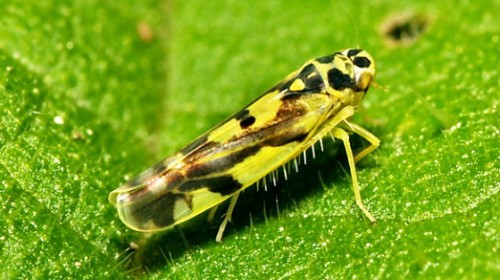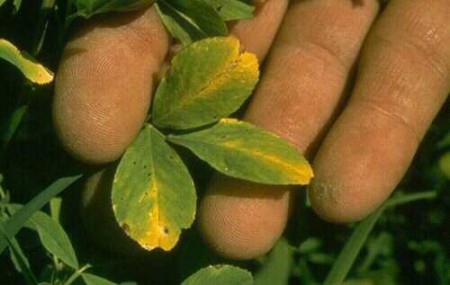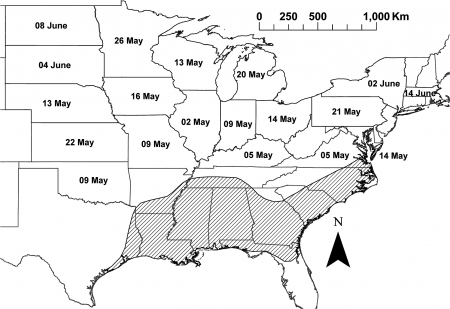June 23, 2015 – Look at this benign appearing insect in the image below, no bigger than a grain of rice. It is Empoasca Fabae, otherwise known as the potato leafhopper and it is a voracious consumer of potatoes, green beans, soybean, rhubarb, alfalfa and other crops. It even has taken a liking to Red Maples, apples, celery, grapes and hops among the 200 plant species upon which it feeds. Such versatility gets rewarded with the insect’s wide distribution, and high frequency of reproduction – up to four generations per growing season. And now because of global warming it is managing this even better today because it is emerging 10 days earlier than what was seen 6 decades ago.
How does the leafhopper damage crops? It pierces plant leaves to get to the sap. In the process it damages the vascular structure of the leaf and infects it with a toxin contained in the insect’s saliva. The damage appears as a condition called “hopperburn” with the plants exhibiting a yellowing or curling, drying and rotting of leaf margins.
The early migration from the Southern Gulf States each spring is plotted on the map below. Observed by entomologists from University of Maryland and City University of New York, who have studied agricultural as well as temperature data from the United States’ National Oceanic and Atmospheric Administration (NOAA) going back to 1950, the published results appear in the online May 13, 2015 edition of the journal PLOS ONE.
Mitchell Baker, biologist and co-lead author of the study states, “Climate change is not just costly because temperatures and oceans rise, but because it makes it harder to feed ourselves…..Increased pest pressure in agriculture is one of the complex effects of continued warming. Predicting arrival time and severity is critical to managing this pest and others like it.”
Today U.S. farmers measure leafhopper infestations by sampling up to 100 sweeps per field using fine-meshed nets. They then, based on the count, determine the infestation spread and whether to apply insecticides as a control measure. There are few if any natural enemies with the best being cold and wet weather in the spring and fall, and cold winters at their points of origin, the Gulf Coast and Southeastern Seaboard states. The only other control is early harvesting of plants infested by leafhopper populations.



















